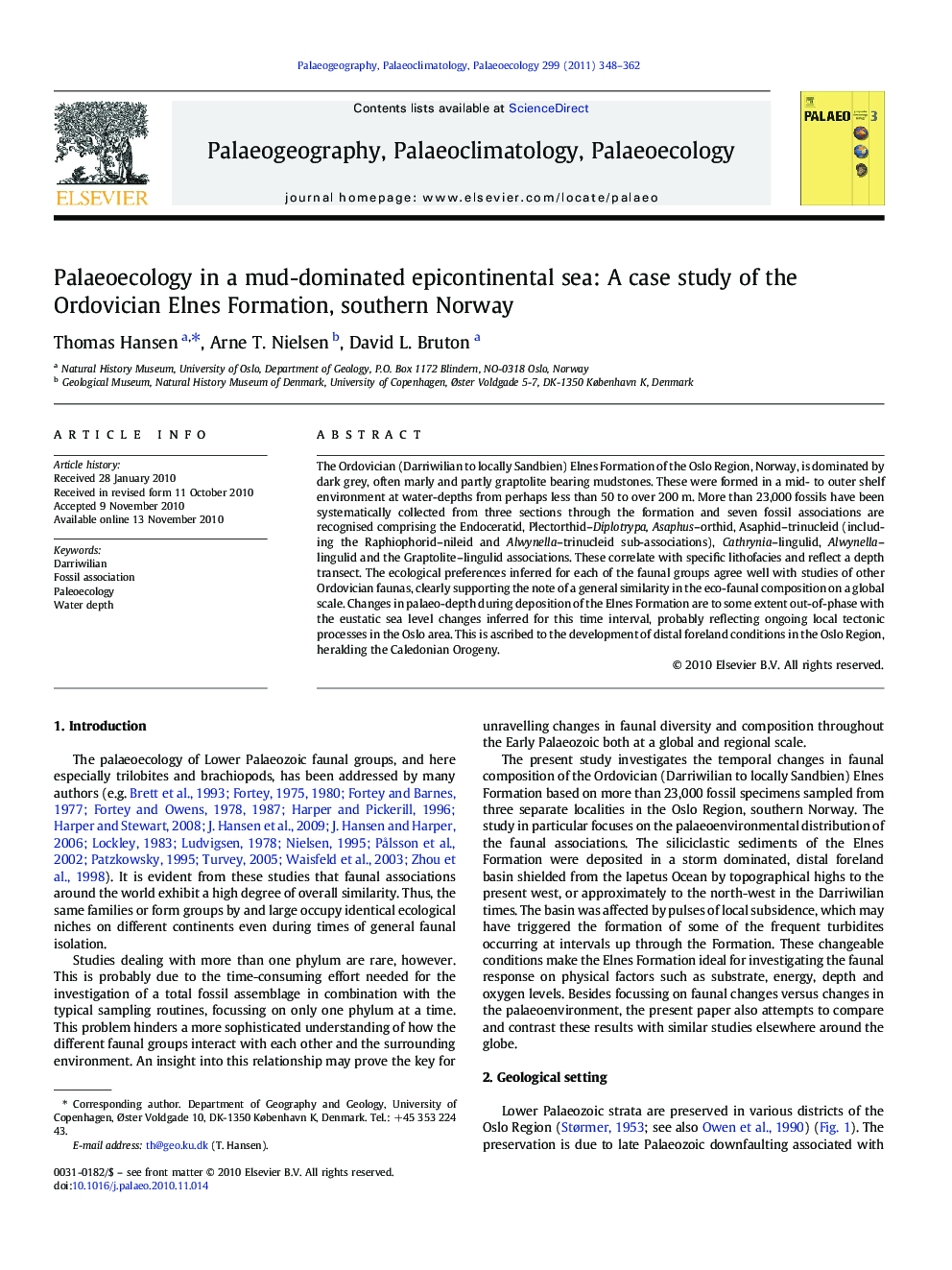| Article ID | Journal | Published Year | Pages | File Type |
|---|---|---|---|---|
| 6350715 | Palaeogeography, Palaeoclimatology, Palaeoecology | 2011 | 15 Pages |
Abstract
The Ordovician (Darriwilian to locally Sandbien) Elnes Formation of the Oslo Region, Norway, is dominated by dark grey, often marly and partly graptolite bearing mudstones. These were formed in a mid- to outer shelf environment at water-depths from perhaps less than 50 to over 200Â m. More than 23,000 fossils have been systematically collected from three sections through the formation and seven fossil associations are recognised comprising the Endoceratid, Plectorthid-Diplotrypa, Asaphus-orthid, Asaphid-trinucleid (including the Raphiophorid-nileid and Alwynella-trinucleid sub-associations), Cathrynia-lingulid, Alwynella-lingulid and the Graptolite-lingulid associations. These correlate with specific lithofacies and reflect a depth transect. The ecological preferences inferred for each of the faunal groups agree well with studies of other Ordovician faunas, clearly supporting the note of a general similarity in the eco-faunal composition on a global scale. Changes in palaeo-depth during deposition of the Elnes Formation are to some extent out-of-phase with the eustatic sea level changes inferred for this time interval, probably reflecting ongoing local tectonic processes in the Oslo area. This is ascribed to the development of distal foreland conditions in the Oslo Region, heralding the Caledonian Orogeny.
Keywords
Related Topics
Physical Sciences and Engineering
Earth and Planetary Sciences
Earth-Surface Processes
Authors
Thomas Hansen, Arne T. Nielsen, David L. Bruton,
